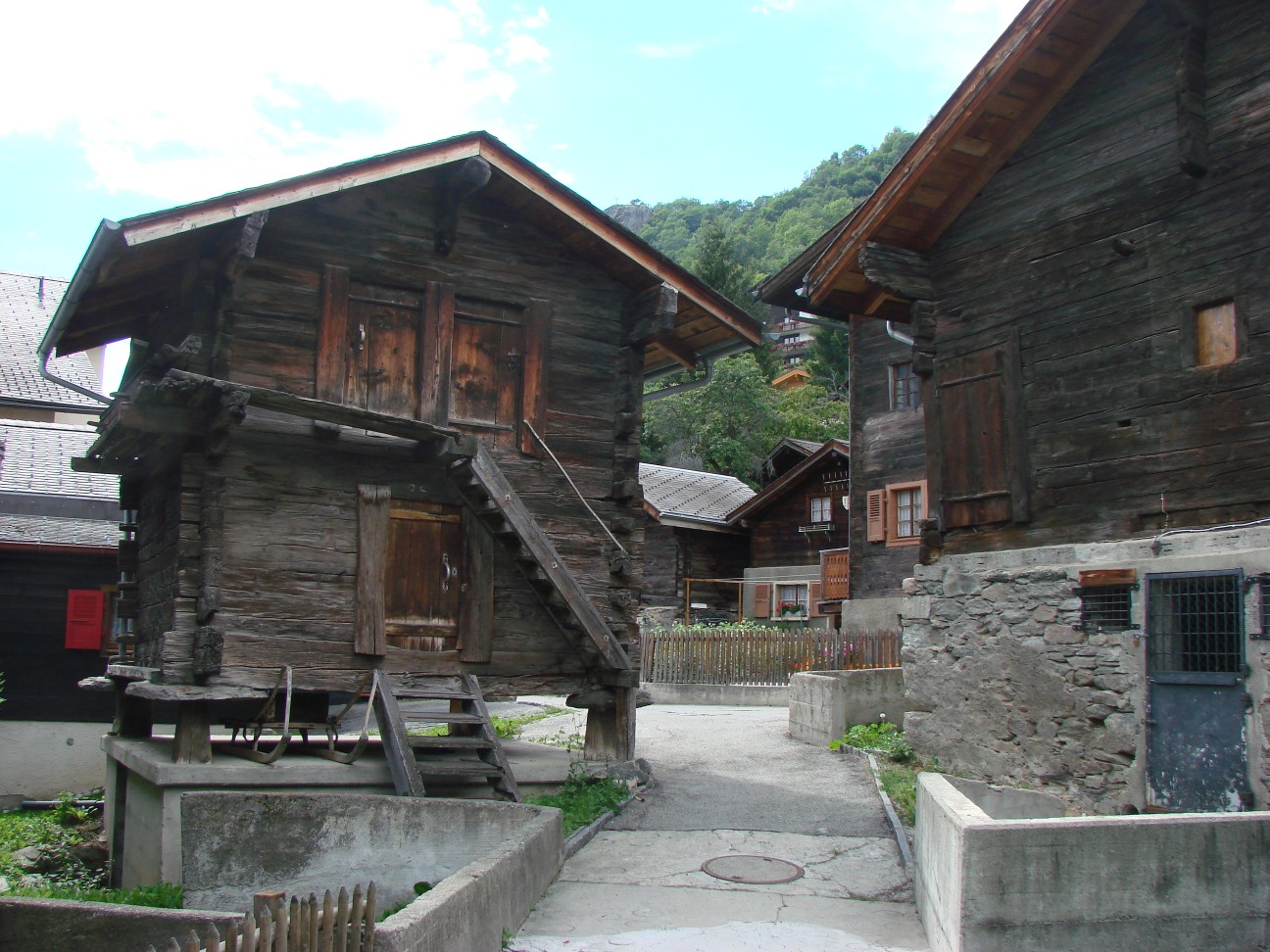|
Brig-Glis
, neighboring_municipalities= Lalden, Mund, Naters, Ried-Brig, Simplon, Termen, Visp, Visperterminen , twintowns = Langenthal (Switzerland), Domodossola (Italy) Brig, officially Brig-Glis (french: Brigue-Glis; it, Briga-Glis), is a historic town and municipality in the district of Brig in the canton of Valais in Switzerland. The current municipality was formed in 1972 through the merger of Brig (city), Brigerbad and Glis.Amtliches Gemeindeverzeichnis der Schweiz published by the Swiss Federal Statistical Office accessed 19 July 2011 Together with other Alpine towns, Brig-Glis engages in the |
Canton Of Valais
Valais ( , , ; frp, Valês; german: Wallis ), more formally the Canton of Valais,; german: Kanton Wallis; in other official Swiss languages outside Valais: it, (Canton) Vallese ; rm, (Chantun) Vallais. is one of the cantons of Switzerland, 26 cantons forming the Switzerland, Swiss Confederation. It is composed of thirteen districts and its capital and largest city is Sion, Switzerland, Sion. The flag of the canton is made of thirteen stars representing the districts, on a white-red background. Valais is situated in the southwestern part of Switzerland, the country. It borders the cantons of Canton of Vaud, Vaud and Canton of Bern, Bern to the north, the cantons of Canton of Uri, Uri and Ticino to the east, as well as Italy to the south and France to the west. It is one of the three large southern Alps, Alpine cantons, along with Ticino and the Grisons, which encompass a vast diversity of ecosystems. It is a bilingual canton, French language, French and German language, German ... [...More Info...] [...Related Items...] OR: [Wikipedia] [Google] [Baidu] |
Stockalper Palace
The Stockalper Palace (German: ''Stockalperpalast'') is a castle in Brig-Glis, Switzerland. It was built between 1658 and 1678 by Kaspar Stockalper, a silk merchant of Brig. The Stockalper Palace was the largest private construction in Switzerland at the time. It is a Swiss heritage site of national significance. History The first building on the site is known as the Stockalper House, which was built in 1532 by Peter Stockalper. Over the following century it was expanded toward the north, but it remained generally unchanged until the rise of Kaspar Stockalper. Kaspar Stockalper was born to a wealthy family in Brig on 14 July 1609. After studying at the university in Freiburg im Breisgau from 1627 to 1629, he returned to Brig and began building an extensive trading empire. By 1647 he had the local salt monopoly and built a road over the Simplon pass which gave him a monopoly on trade over this pass. Between 1651 and 1659 he built a canal from Vouvry to Collombey which exp ... [...More Info...] [...Related Items...] OR: [Wikipedia] [Google] [Baidu] |
Brig (district)
The district of Brig is a district in the canton of Valais, Switzerland. It has a population of (as of ). Municipalities It includes the following municipalities: Coat of arms The blazon of the municipal coat of arms is ''Or, an Eagle with dragon's tail displayed Sable, crowned, beaked, langued, membered and tailed Gules.'' Demographics Brig has a population () of . Most of the population () speaks German (21,176 or 91.9%) as their first language, Italian is the second most common (434 or 1.9%) and French is the third (316 or 1.4%). There are 17 people who speak Romansh. , the gender distribution of the population was 48.5% male and 51.5% female. The population was made up of 10,437 Swiss men (42.6% of the population) and 1,449 (5.9%) non-Swiss men. There were 11,126 Swiss women (45.4%) and 1,512 (6.2%) non-Swiss women. [...More Info...] [...Related Items...] OR: [Wikipedia] [Google] [Baidu] |
Langenthal
Langenthal is a town and a municipality in the district of Oberaargau in the canton of Bern in Switzerland. On 1 January 2010 the municipality of Untersteckholz merged into the Langenthal. On 1 January 2021 the former municipality of Obersteckholz merged into Langenthal. Langenthal is an educational, cultural, and economic center for the region of Oberaargau. History Archeological evidence suggests that early settlements existed around 4000 B.C. in the Langenthal area. A Hallstatt necropolis with twelve grave mounds has been found at Unterhard. Remnants of two Roman villae have also been identified. Langenthal is first mentioned in 861, as ''marcha in Langatun'', referring to farming estates scattered along the Langete (a tributary of the Murg). The Old High German name ''Langatun'' is presumably composed of a hydronym ''langa-'' and the Gaulish element ''dunum'' "fort" (which had become productive as a suffix in toponyms). The re-interpretation of the name as including ... [...More Info...] [...Related Items...] OR: [Wikipedia] [Google] [Baidu] |
Visp
Visp (french: Viège) is the capital of the district of Visp in the canton of Valais in Switzerland. Geography Visp lies in the Rhône valley, at the confluence of the Vispa and the Rhône, west of Brig-Glis. Visp has an area, , of . Of this area, 17.0% is used for agricultural purposes, while 59.7% is forested. Of the rest of the land, 19.5% is settled (buildings or roads) and 3.9% is unproductive land. The proposed merger of the municipalities of Eggerberg, Ausserberg, Bürchen, Baltschieder, Visp and Visperterminen was rejected by the residents.Amtliches Gemeindeverzeichnis der Schweiz published by the Swiss Federal Statistical Office Retrieved 17 February 2011 Coat of arms The |
Termen
Termen is a municipality in the district of Brig in the canton of Valais in Switzerland. History Termen is first mentioned in 1201 as ''Terman''. Geography Termen has an area, , of . Of this area, 42.2% is used for agricultural purposes, while 27.2% is forested. Of the rest of the land, 3.3% is settled (buildings or roads) and 27.4% is unproductive land. The municipality is located on a high plateau to the east of Brig. It consists of the village of Termen, the hamlets of Hasel and z'Matt and the ski resort of Rosswald. Coat of arms The blazon of the municipal coat of arms is ''Argent, two Swords Sable in saltire.'' Demographics Termen has a population () of . , 6.8% of the population are resident foreign nationals.Swiss Federa ... [...More Info...] [...Related Items...] OR: [Wikipedia] [Google] [Baidu] |
List Of Towns In Switzerland
Below is a list of towns and cities in Switzerland. Until 2014 municipalities with more than 10,000 inhabitants were considered to be towns (german: Stadt/Städte, french: ville(s), it, città). Since 2014, the Federal Statistical Office (FSO) uses a new algorithm (called german: Statistische Städte 2012, or french: Villes statistiques 2012) to define whether a municipality can be called a town or not; it now also depends on its character. Currently, FSO considers 162 municipalities as towns/cities (german: Statistische Städte, french: Villes statistiques) in Switzerland. Further, some municipalities which would fulfill such a definition nevertheless prefer to understand themselves still as a village, or consequently refer to themselves just as municipalities (german: Gemeinde, french: commune, it, comune). The Swiss definition of a town differs from the definition of a municipality. List of towns and cities This is an alphabetical list of towns or cities (these English term ... [...More Info...] [...Related Items...] OR: [Wikipedia] [Google] [Baidu] |
Visperterminen
Visperterminen (Walser German: ''Tärbinu'') is a municipality in the district of Visp in the canton of Valais in Switzerland. History Visperterminen is first mentioned in the 11th Century as ''Termenum''. In 1221 it was mentioned as ''Terminum''. Geography Visperterminen has an area, (as of the 2004–09 survey) of . Of this area, about 27.4% is used for agricultural purposes, while 34.9% is forested. Of the rest of the land, 1.9% is settled (buildings or roads) and 35.8% is unproductive land. In the 2004–09 survey a total of or about 0.9% of the total area was covered with buildings, an increase of over the 1981 amount. Of the agricultural land, is used for orchards and vineyards, is fields and grasslands and consists of alpine grazing areas. Since 1981 the amount of agricultural land has decreased by . Over the same time period the amount of forested land has increased by . Rivers and lakes cover in the municipality. The municipality is located in the Visp ... [...More Info...] [...Related Items...] OR: [Wikipedia] [Google] [Baidu] |
Alpine Town Of The Year
The Alpine Town of the Year award is given to towns which have made exceptional efforts for the realization of the Alpine Convention and for sustainable development. The ''Alpine Towns of the Year'' are members of the international association of the same name. The ''Alpine Town of the Year'' Award The honorary title ''Alpine Town of the Year'' is awarded annually by the general meeting of the association's members at the recommendation of a jury. The jury examines the projects and proposals of the candidates on the basis of ecological, social and economic criteria. Every town in the area covered by the Alpine Convention can apply for the award. The designated Alpine Town of the Year organizes a workshop during which its programme is presented at least six months before the actual Alpine Town Year. During the Alpine Town Year, there will be at least three international events, and two sustainable projects will be realized. The award and the cooperation across linguistic and ge ... [...More Info...] [...Related Items...] OR: [Wikipedia] [Google] [Baidu] |
Simplon, Switzerland
Simplon ( wae, Simpilu; it, Sempione; french: Simplon), earlier known as Simpeln, is a municipality in the district of Brig in the canton of Valais in Switzerland. History The area was part of Italy since the Roman Empire, but it was colonized by the Germans after 1000 AD, so the Bishop of Sion bought it from the counts of Novara in 1291. Simplon is first mentioned in 1267 as ''Simpilion''. In 1285 it was mentioned as ''Xeinplon''. Geography Simplon has an area, , of . Of this area, 21.5% is used for agricultural purposes, while 12.3% is forested. Of the rest of the land, 1.0% is settled (buildings or roads) and 65.2% is unproductive land. The municipality is located in the Brig district, on the south side of the Simplon Pass near the Italian border. It consists of the village of Simplon and the hamlets of Gabi, Egga and Maschihüs as well as the ''Hospiz'' (Hospice) in the Simplon Pass. Coat of arms The blazon of the municipal coat of arms is ''Argent, a bicephalous Ea ... [...More Info...] [...Related Items...] OR: [Wikipedia] [Google] [Baidu] |
Naters
Naters is a municipality in the district of Brig in the canton of Valais in Switzerland. On 1 January 2013 the former municipalities of Birgisch and Mund merged into the municipality of Naters, which also includes the villages of Hegdorn, Geimen, Mehlbaum, Rischinen and Blatten bei Naters.Nomenklaturen – Amtliches Gemeindeverzeichnis der Schweiz accessed 9 February 2013 History Naters is first mentioned in 1018 as ''Nares''.Geography Naters has an area, , of . Of this area, 16.5% is used for agricultural purposes, while 9.0% is forested. Of the rest of the land, 1.8% is settled (buildings or roads) and 72.7% is unproductive land. The municipality is locate ...[...More Info...] [...Related Items...] OR: [Wikipedia] [Google] [Baidu] |
Mund
Mund is a former municipality in the district of Brig in the canton of Valais in Switzerland. On 1 January 2013 the former municipalities of Mund and Birgisch merged into the municipality of Naters.Nomenklaturen – Amtliches Gemeindeverzeichnis der Schweiz accessed 9 February 2013 History Mund is first mentioned in 1259 as ''Munt''. Until about 1800 it was normally known as ''Wyler'' and the last mention of that name was in 1850.Geography Before the merger, Mund had a total area of . Of this area, 24.2% is used for agricultural purposes, while 20.3% is forested. Of the rest of the land, 0.7% is settled (buildings or roads) and 54.7% is unproductive land.[...More Info...] [...Related Items...] OR: [Wikipedia] [Google] [Baidu] |





.jpg)


